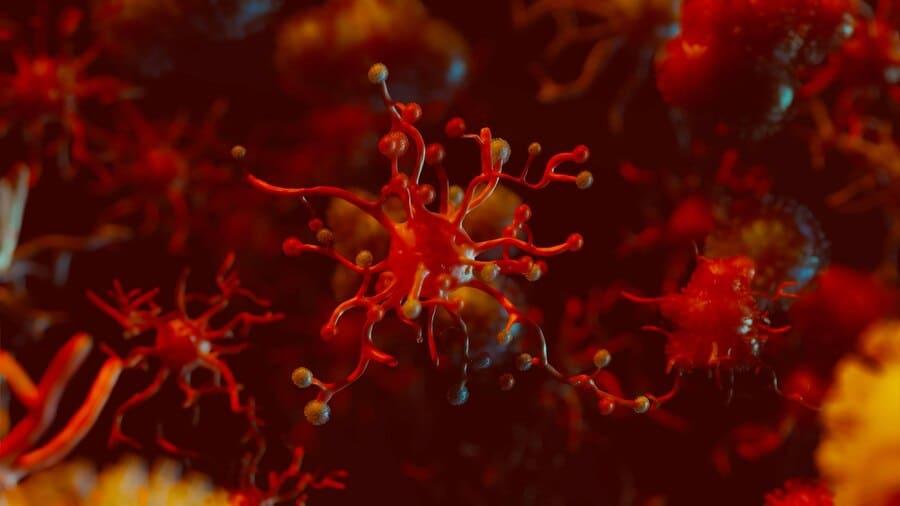KEY TAKEAWAYS
- The phase 2 trial aimed to assess DFS at 1 year in allogeneic HSCT for high-risk myeloid disorders using myeloablative TMI.
- The study found that adding myeloablative TMI at 9Gy to standard FluBu4 was safe and effective in high-risk myeloid malignancies.
In leukemia patients undergoing allogeneic hematopoietic stem cell transplantation (HSCT), the intensity of the conditioning regimen correlates with the risk of relapse. Still, its benefit may be offset by its risk of toxicity.
Lucas Maahs and his team conducted a study that aimed to achieve over 50% Disease-Free Survival (DFS) at 1 year in patients with high-risk acute myeloid leukemia (AML), myelodysplastic syndrome (MDS), or chronic myeloid leukemia (CML) undergoing allogeneic HSCT.
The study presented outcomes on 28 patients who underwent the TMI-based transplant, while 3 became ineligible due to disease status. Donors comprised matched related (MRD, n=9), matched unrelated (MUD, n=13), or 1-antigen mismatched unrelated (MMUD, n=6).
The gender ratio was 16 females to 12 males, with a median age of 53 years (range: 20-68).
The median HCT-Comorbidity Index (HCT-CI) was 3, ranging from 0 to 7. All 20 AML patients were deemed at high relapse risk due to adverse cytogenetic or molecular profiles at diagnosis (n=13), in second complete remission (CR2) (n=2), or with active disease at transplant (n=5). Peripheral blood stem cells (PBSC) were administered to all patients, with a median CD34+ cell dose of 8.5 x 106/kg, ranging from 2.4 to 19.9.
Grade 3-4 extramedullary toxicities were mucositis affected 57% of patients (n=16), nausea/vomiting occurred in 11% (n=3), and diarrhea in 7% (n=2). Acute GVHD of grade III-IV was observed in 3 patients (10%). Moderate/severe chronic GVHD was present in 10 patients (36%). With a median follow-up of 1315 days (range: 158-1925 days) for surviving patients, the overall 1-year and current overall survival (OS) rates were 73% and 64%, respectively.
The GVHD-Free Relapse-Free Survival (GRFS) at 1 year stood at 54%. Out of the 5 AML patients transplanted with active disease, 3 remained alive and in remission at both 1 year and the current date, while 2 succumbed to relapsed disease. Among the 28 study patients, 6 encountered relapse/progression (21%), resulting in 5 fatalities from the disease (18%). Additionally, transplant-related mortality (TRM) claimed the lives of 5 patients (18%), with 2 deaths attributed to septic shock, 1 to disseminated toxoplasmosis, 1 to idiopathic pneumonia, and 1 to unknown causes. Kaplan Meyer curves depicting OS and DFS were observed.
The study concluded that incorporating myeloablative TMI at 9Gy alongside standard myeloablative targeted FluBu4 was well tolerated and yielded highly promising outcomes in myeloid malignancy patients who were at high risk of relapse. Research was funded by the University of Illinois at Chicago.
Source: https://tandem.confex.com/tandem/2024/meetingapp.cgi/Paper/23346
Clinical Trial: https://clinicaltrials.gov/study/NCT03121014
Maahs L, Koshy M, Sweiss K, et al. (2024) ‘’Addition of Myeloablative Doses of Total Marrow Irradiation (TMI) to Myeloablative Fludarabine/Busulfan Conditioning for Allogeneic HSCT in Patients with High-Risk AML, CML, or Myelodysplastic Syndrome: A Phase II Clinical Trial.’’ Presented at TCT-ASTCT-CIBMTR (209).



